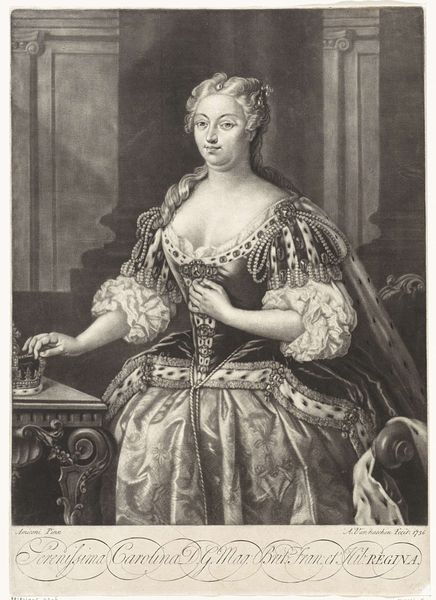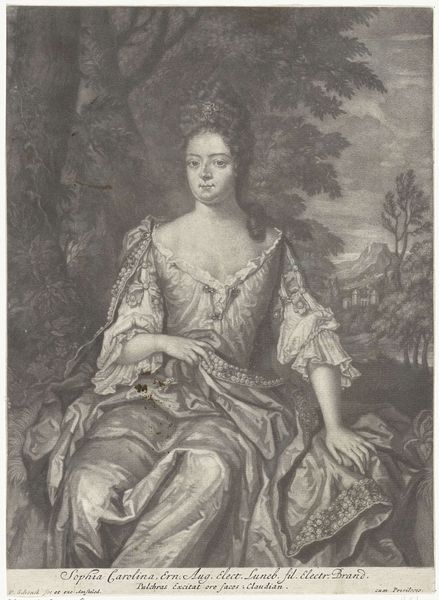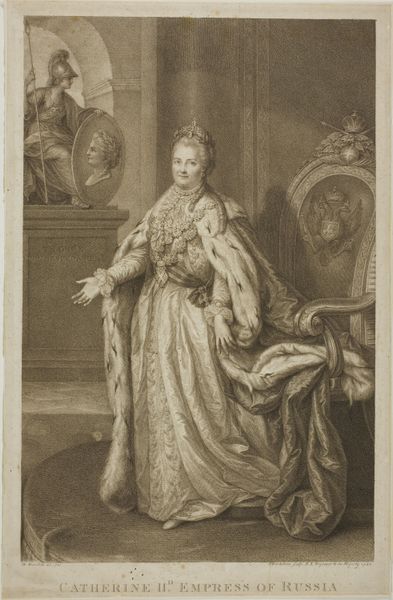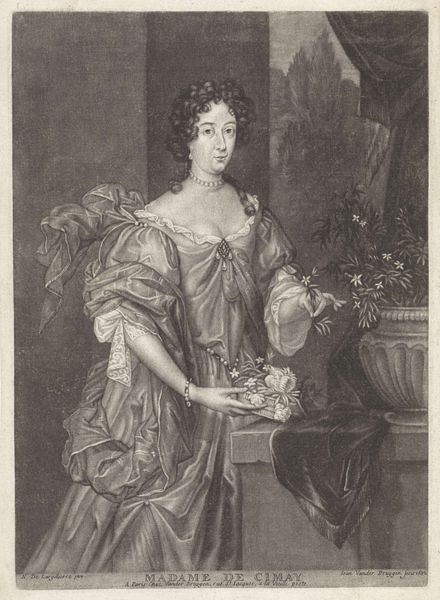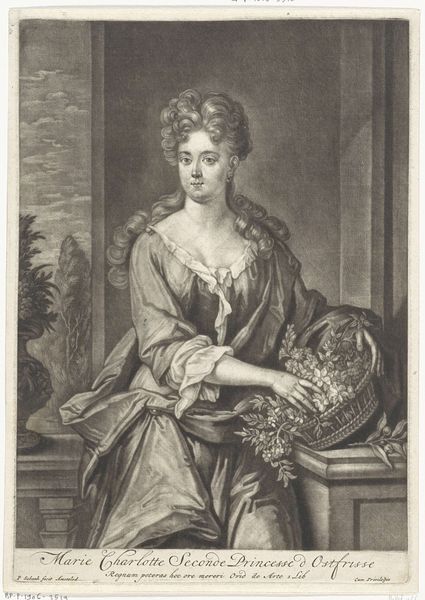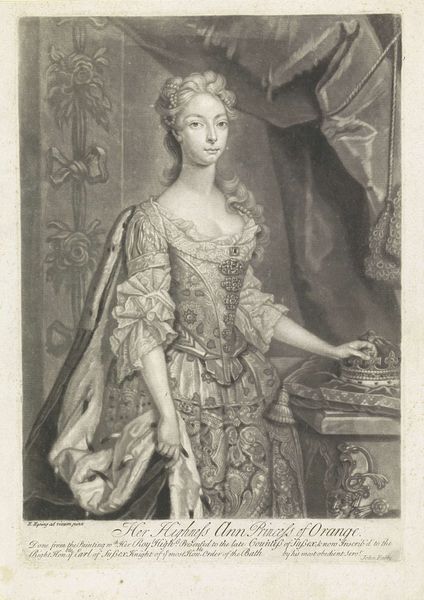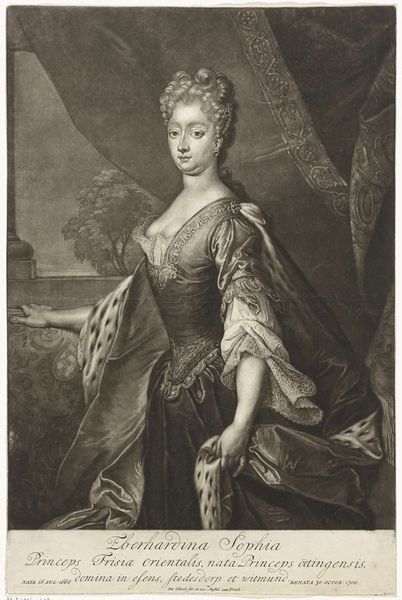
engraving
#
portrait
#
baroque
#
charcoal drawing
#
figuration
#
line
#
history-painting
#
engraving
Dimensions: height 338 mm, width 246 mm
Copyright: Rijks Museum: Open Domain
Editor: Here we have Jacob Gole’s "Portret van Sophia Charlotte, koningin van Pruisen," made sometime between 1684 and 1724. It's an engraving and has such delicate lines. She seems rather serious, even melancholic. What historical narratives are embedded in this work, do you think? Curator: This portrait exists within a fascinating web of power, gender, and representation. Sophia Charlotte was a notable intellectual and patron of the arts in her time. How do you think her identity as a woman in a position of power influences our interpretation of the portrait? Editor: Well, the fur stole and luxurious fabric obviously communicate status, but there's also something about her gaze…direct, but not challenging, perhaps. Is the image subtly conveying some kind of constraint? Curator: Exactly. Baroque portraiture, while seemingly straightforward, often served to reinforce societal norms and expectations. Consider the historical context: women, especially those in royal families, were frequently depicted to project dynastic strength and feminine virtue. Notice the contrast between her delicate features and the symbols of wealth and authority. What does that tell you? Editor: That it is not *just* a portrait of a woman. It’s an image designed to communicate specific ideals about women in power. Almost like propaganda, but much prettier! Curator: Precisely! Think about the ways in which artists throughout history have used portraiture to shape perceptions and legitimize authority. Also consider class dynamics; only the elite could have portraits commissioned. The engraving could circulate this particular persona far and wide. How do you see the relationship between the personal and the political intertwining here? Editor: I see the threads now; how it is a dialogue between personal presentation, class, gender roles and the societal functions of art. I learned a lot, especially seeing portraiture not as simple representation, but also an expression of power. Curator: Absolutely! And hopefully this offers a perspective shift; a reminder to look at art not just for its aesthetic appeal, but also as a reflection of the complex social and political landscape of its time.
Comments
No comments
Be the first to comment and join the conversation on the ultimate creative platform.
